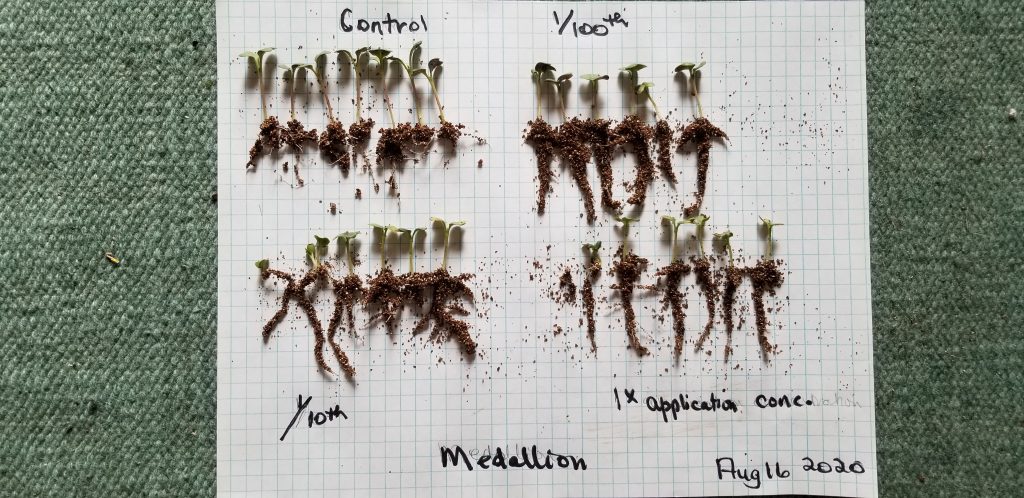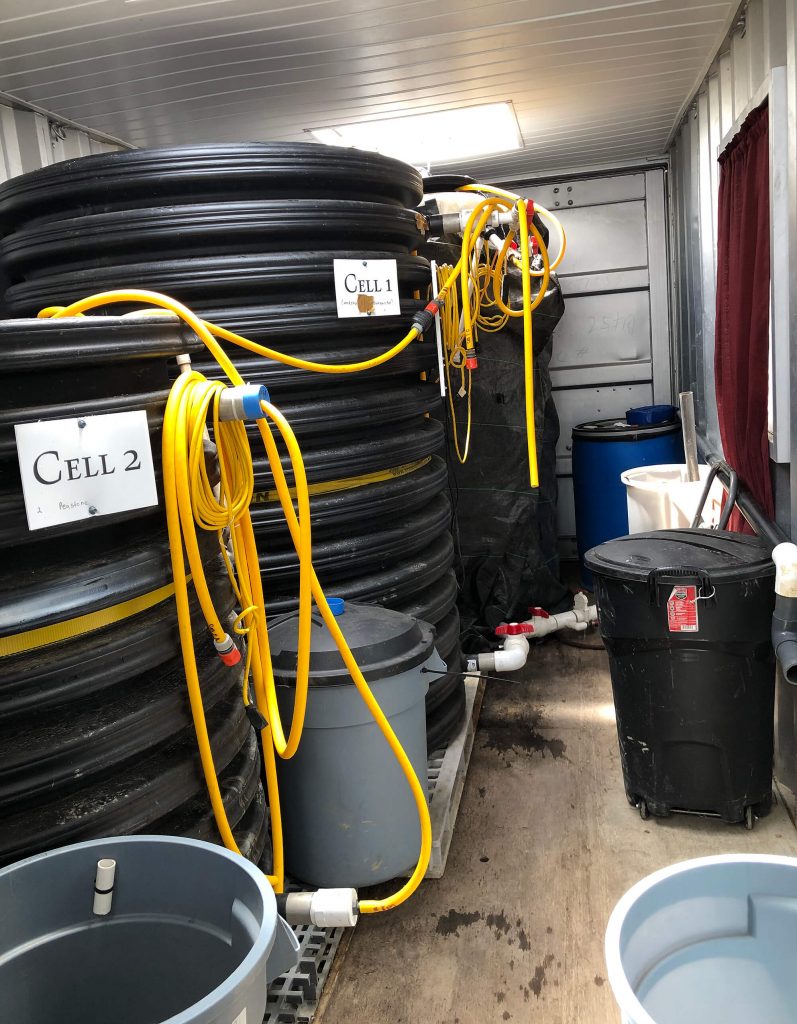Water recycling is increasingly recognized as necessary to deal with the dual issues of water availability and the ever-evolving environmental restrictions faced by greenhouse and nursery producers related to water run-off. Although conservation has become an essential objective, the practice of using recycled water poses many risks and challenges. Recirculated water often contains nutrient, pesticide and plant growth regulator (PGRs) residues which could negatively affect crop production. Research is being conducted around the world to improve recycled water quality, and several projects currently being funded through the COHA research cluster are especially focused on sustainable and affordable solutions.
Enabling re-circulation with hybrid treatment systems is the next phase of longer-term water research being led by environmental microbiologist Dr. Ann Huber of the Soil Resource Group. This project is part of the Cluster Project and is funded by the Canadian Ornamental Horticulture Alliance (COHA-ACHO) and by the Government of Canada under the Canadian Agricultural Partnership’s AgriScience Program.
Simply stated, a hybrid treatment system (HTS) is a non-vegetated, constructed approach to the filtration and cleansing of water through a series of organic and inorganic media filters. Explains Dr. Huber, “An HTS is the next step in water cleaning technologies as a successor to previous research into constructed wetlands and woodchip bioreactors. While those individual approaches have been found to be useful for some pathogen and nutrient removal, there are many external factors that can impact their usefulness.”
Earlier projects by Dr. Huber have already proven the effectiveness of hybrid treatment systems in the removal of certain nutrients, including nitrogen and phosphorus, and fungal pathogens. The objective of the current project is to expand those research findings to include other greenhouse production chemicals and especially plant growth regulator (PGR) residues, which have been shown to impact plant growth even when found in very low levels of recirculated water.
Due to their typical four- to five-year funding cycle, research projects are generally defined by very specific start and end dates. However, as water issues within the horticulture sector have long been a top priority for both governments and industry, Dr. Huber has succeeded in making her research into effective water re-circulation technologies a mostly continuous long-term field of study, beginning in 2007.
Besides the very obvious benefits of providing the industry with continually updated research results, the continuity of Dr. Huber’s research projects also provides significant economic efficiencies. Two portable pilot units constructed as part of a previous research project funded with support from Flowers Canada Ontario (FCO) at a cost of $50,000 each are now an integral component of this next-phase study.
According to Dr. Huber, “As far as I’m aware, there are no other pilot-scale systems such as these being used for water re-circulation research. The system is designed to have the capacity to test up to eight mineral or organic media in any combination or alternatively, test the same media at different flow rates and retention times. These pilot systems provide us the opportunity to test commercial greenhouse water on-farm without risking the health of the crop.”
The original focus of Dr. Huber’s work was to study the effectiveness of woodchip denitrification bioreactors on the removal of various water pollutants. Although she continues to be optimistic about the use of woodchip as an effective and economical treatment for some contaminants, the current research project also incorporates a number of mineral media, including pea gravel, wollastonite, filter sand and a slag/gravel mix to expand the range of undesirable components that can be removed within a single ‘hybrid’ treatment system.
And, although other researchers are studying organic systems (e.g. woodchips) which employ an aerobic process to remove pesticide and PGR residues, the research work being conducted by Dr. Huber and her research team is an ongoing study of an anoxic approach in order to retain the current treatment system’s capacity to remove nitrogen and fungal pathogens.
With the current research project reaching the half-way mark during the fall of 2020, Dr. Huber and her team have been able to successfully mitigate the impacts of Covid19 that might have otherwise negatively impacted their progress. Most of the work has been outdoors and in low-contact environments, and both Dr. Huber and collaborator Dr. Jeanine West were also extremely fortunate to have access to qualified family technicians.
Although the preliminary research results are not conclusive, to date the data collected by the research team, based on water quality analysis and results of bioassay testing indicate very promising results. The team has been able to demonstrate the removal of a range of PGRs and pesticides by several of the individual media in batch studies, and the bioassay results demonstrate a positive growth response to PGR removal. Interestingly, the bioassay tests are capable of detecting the presence of some PGRs at concentrations lower than the sensitivity of laboratory testing.
Because this is a very new technology, only three growers — two floriculture greenhouses and one nursery grower — are currently using hybrid treatment systems to treat recycled irrigation water. The research team is confident that these early results will meet their original objective, to provide growers with a valuable and affordable approach to realize clean recycled water for their production needs.
READ MORE.

 Français
Français


 Dr. Ann Huber, Soil Resource Group
Dr. Ann Huber, Soil Resource Group Dr. Jeanine West, Phytoserv
Dr. Jeanine West, Phytoserv
















 Dr. Praveen Saxena, Professor, Plant Agriculture, and Director of GRIPP
Dr. Praveen Saxena, Professor, Plant Agriculture, and Director of GRIPP





 Communication Materials on the Latest Research
Communication Materials on the Latest Research